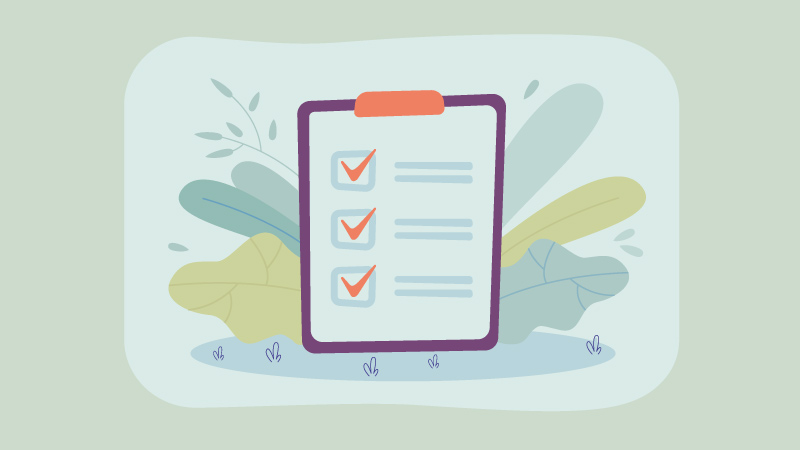Search Engine Optimization (SEO) is not a one-time effort, it’s a continuous process that needs structure and discipline. Whether you’re a beginner or a seasoned marketer, having a clear SEO task checklist helps you stay consistent and rank higher on Google. In this article, we’ll break down SEO tasks into four categories: Priority SEO Tasks, Daily & Weekly SEO Tasks, Monthly SEO Tasks, and Periodic SEO Tasks, so you know exactly what to do and when.
Priority SEO Tasks (Start Here)
These are the foundational SEO activities you should prioritize before anything else.
- Set Up Analytics Tools: Install Google Analytics and Google Search Console to track visits, keyword rankings, traffic sources, and site performance. This gives you data-driven insights to make smarter SEO decisions from day one.
- Check and Improve Your Page Speed: Slow websites hurt rankings and user experience. Use PageSpeed Insights or GTmetrix to test your load times and fix issues like large images, render-blocking scripts, or uncompressed files so your pages load under 2-3 seconds.
- Optimize Your Website Structure: Make sure your navigation is logical and easy to follow. Use clear menus, internal linking, and a hierarchy of categories so Google can crawl all pages easily. A well-structured site helps both users and search engines find content.
- Optimize Your Landing Pages: Review your core pages (like services or product pages) and ensure they’re optimized around target keywords, with strong headings, meta tags, and compelling calls-to-action. These pages should convert traffic into leads or customers.
- Optimize for Voice Search: Add conversational, question-based phrases like “how to,” “best way to,” or long-tail keywords that people use when speaking. Optimize your content for featured snippets and FAQ schemas to capture voice assistant searches.
- Create Your Own Keyword Cluster: Build a group of related keywords around your main topic. For example, if your main keyword is “solar panels,” cluster around terms like “solar panel installation,” “cost of solar,” and “how solar panels work.” This helps build topical authority.
- Set Up Position Tracking: Use tools like SEMrush, Ahrefs, or Google Search Console to monitor how your keywords perform in SERPs. This helps you track progress and identify which pages may need additional optimization.
- Identify a Topic Cluster: Choose a main pillar topic and create supporting articles that link back to it. For example, a core page on “SEO Basics” can be supported by articles on keyword research, on-page SEO, link building, etc. This boosts your internal linking and topical relevance.
Goal: Lay a strong SEO foundation for long-term growth.
Daily & Weekly SEO Tasks (Stay Consistent)
Consistency keeps your website healthy and your rankings steady.
- Check Google Search Console for Errors: Review Crawl Errors, Indexing Issues, or Manual Actions daily. Fix them quickly so they don’t impact your ranking or visibility.
- Scan for Broken Links or 404 Errors: Use ScreamingFrog or plugins like Broken Link Checker to detect dead links. Replace or redirect them to preserve link equity and prevent user frustration.
- Review Google Analytics: Look at traffic trends, bounce rate, session duration, and top-performing pages. Identify which content is engaging visitors and which pages need improvement.
- Review Competitors’ SERP Positions: Monitor what keywords your competitors rank for. Use SEMrush or Ubersuggest to track rising keywords and content gaps you can exploit.
- Check Brand Mentions & Local Citations: Search your brand name online and ensure your NAP (Name, Address, Phone) is consistent across all directories. Respond to brand mentions or reviews to build trust signals.
- Verify Schema Markup and Robots.txt Status: Make sure your structured data hasn’t triggered any errors in Search Console. Confirm that important pages are not accidentally blocked by robots.txt.
Goal: Maintain SEO hygiene and stay ahead of competitors.
Monthly SEO Tasks (Keep Growing)
Some SEO tasks only need to be done once a month for long-term optimization.
- Conduct Keyword Research: Use tools like Google Keyword Planner, Ahrefs, or SEMrush to find new short-tail and long-tail keywords to target in your upcoming content.
- Create Quality Content: Write fresh, in-depth blog posts or landing pages around relevant keywords. Ensure the content is unique, helpful, and optimized for search intent.
- Identify Content to Refresh: Look for old blog posts or outdated pages. Update old content with new statistics, updated internal links, and LSI keywords to boost rankings again.
- Monitor Organic Search Traffic: Review how your overall organic traffic is trending. Spot dips or boosts and attribute them to specific updates or Google algorithm changes.
- Check for Indexing Issues: Use the Index Coverage Report in Search Console to ensure important pages are indexed. Submit any missing URLs for indexing.
- Monitor Backlinks: Use Ahrefs or SEMrush to check new backlinks and spot toxic ones. Disavow spammy links and maintain a clean backlink profile.
Goal: Grow traffic steadily and keep pages relevant.
Periodic SEO Tasks (Quarterly or As Needed)
These tasks improve overall site authority and E-E-A-T (Experience, Expertise, Authoritativeness, Trustworthiness).
- Add Internal Links from High-Authority Pages: Link from your highest-performing or highest-authority pages to new content. This helps distribute link juice and improves indexing.
- Create and Optimize Videos: Create explanation videos or tutorials related to your niche. Upload to YouTube and embed them on blogs to increase engagement and rank in YouTube search.
- Optimize Slugs: Edit long or messy URLs into short, keyword-rich slugs (e.g., /seo-tasks-checklist instead of /blog/seo-checklist-full-guide-with-steps). This improves click-through rate and readability.
- Add Alt Text to Images: Write descriptive alt text using target keywords where appropriate. This boosts accessibility and can drive traffic via Google Images.
- Optimize Content for Search Intent: Review whether your content satisfies the user’s intent (informational, transactional, navigational). Adjust tone, CTA, or keywords if needed.
- Create Infographics: Design infographics summarizing your content. These visuals are shareable and can earn backlinks and social shares, strengthening your E-E-A-T signals.
Goal: Build authority, increase engagement and user satisfaction.
SEO Success isn’t a Mystery, It’s a Routine
By following this structured SEO task checklist, you can turn your website into a high-performing, search engine-friendly platform. Start with priority tasks, stay consistent with daily checks, grow monthly with fresh SEO actions, and polish periodically to keep your rankings strong.
Frequently Asked Questions
At least once a month, but stay alert weekly for any major Google updates.
Quality content and a structured website, these two are still the core of SEO.
Yes, but using tools like Google Analytics, SEMRush, or Ahrefs makes it much more effective.




